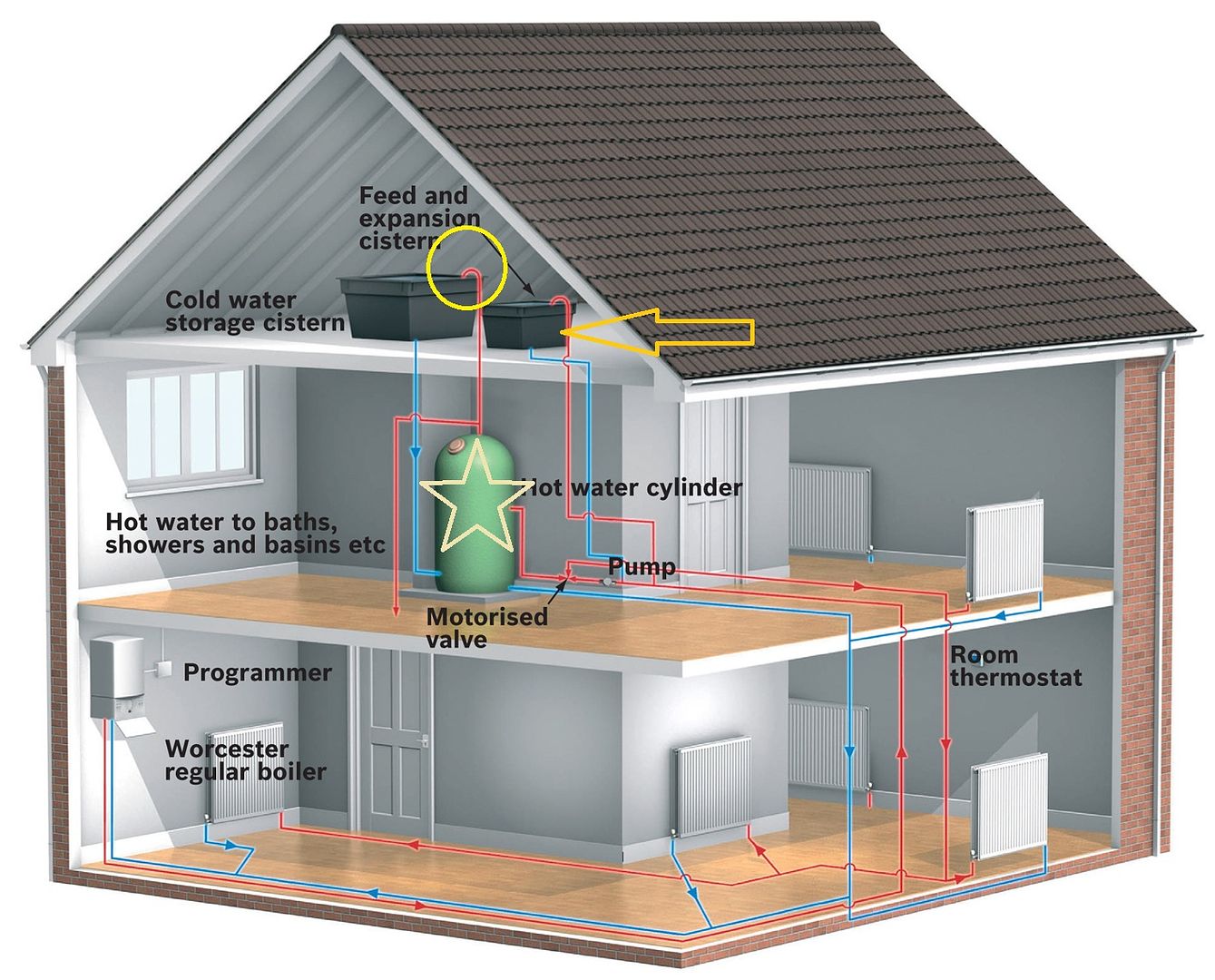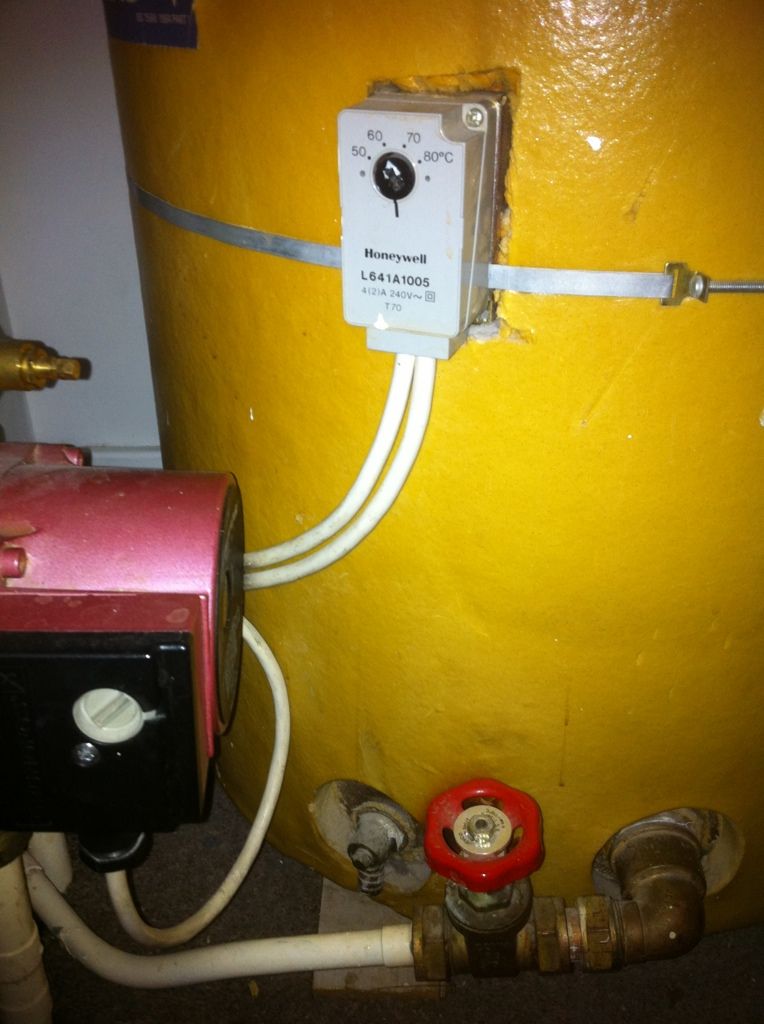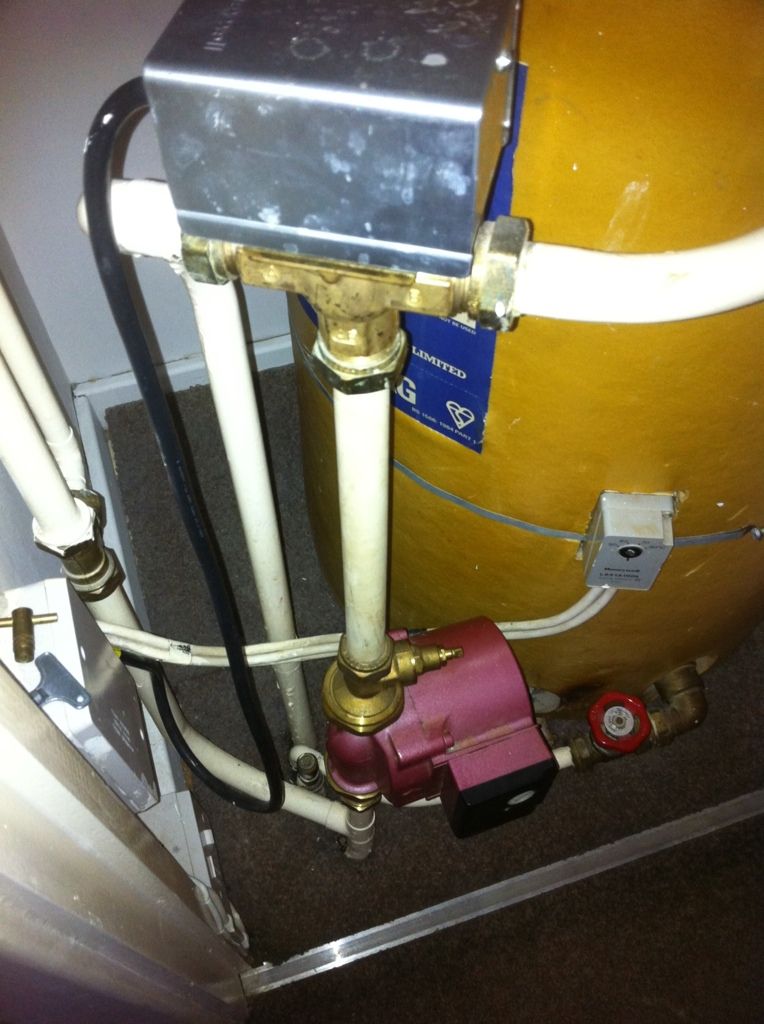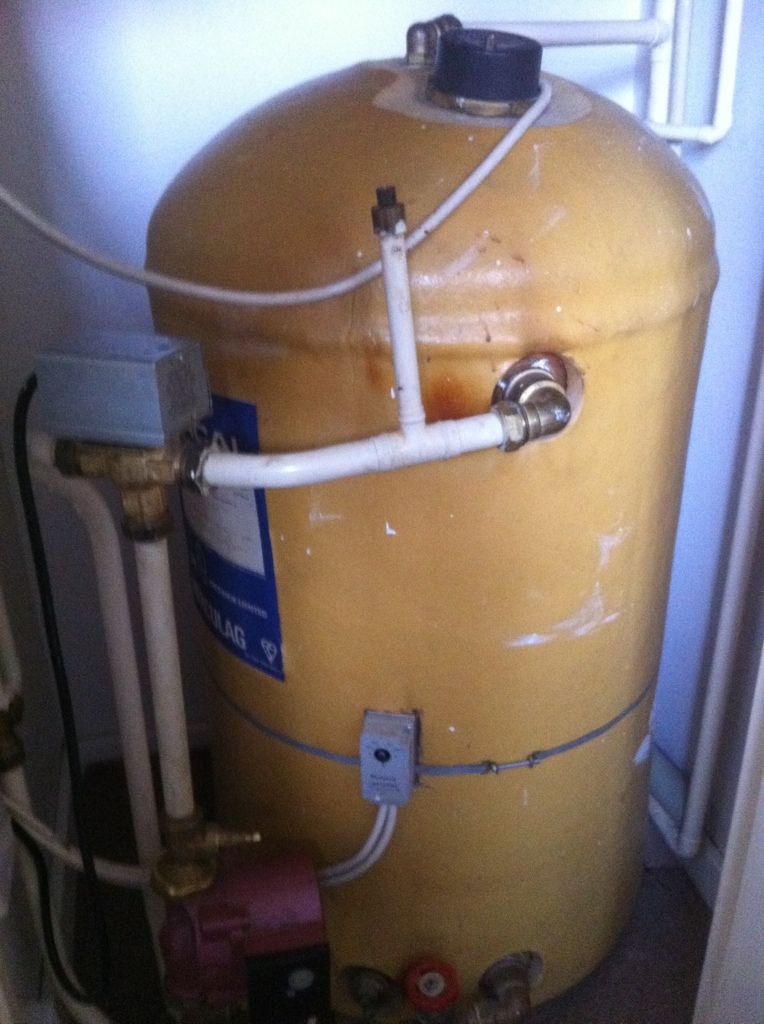Hi all,
We recently moved into a new house and I have noticed a few problems since moving in, specifically these:
1) When the hot water and Central Heating are on there is a strange noise coming from the tank, it sounds like a kettle boiling. The immersion heater is off, but the noise was loud enough to wake me up (the tank making the noise is the one with the star on it in the diagram)
2) Went up into the loft to investigate the noise as was worried it was damaging the two tanks in the loft. What I found was the smaller tank, had no lid, which I assume is bad, and also has a white sludge like film on the top of it. (This tank is shown by the orange arrow)
3) Finally I looked at the larger tank and the pipe feeding into the top of it appeared to have been flowing and there was water on top of the small tank lid (which you lift off to look into the large tank) it was only a bid of a puddle on the small lid, but the pipe was far enough into the big tank that im unsure how it got there, could it be extreme condensation?
Any help appreciated
Thanks

We recently moved into a new house and I have noticed a few problems since moving in, specifically these:
1) When the hot water and Central Heating are on there is a strange noise coming from the tank, it sounds like a kettle boiling. The immersion heater is off, but the noise was loud enough to wake me up (the tank making the noise is the one with the star on it in the diagram)
2) Went up into the loft to investigate the noise as was worried it was damaging the two tanks in the loft. What I found was the smaller tank, had no lid, which I assume is bad, and also has a white sludge like film on the top of it. (This tank is shown by the orange arrow)
3) Finally I looked at the larger tank and the pipe feeding into the top of it appeared to have been flowing and there was water on top of the small tank lid (which you lift off to look into the large tank) it was only a bid of a puddle on the small lid, but the pipe was far enough into the big tank that im unsure how it got there, could it be extreme condensation?
Any help appreciated
Thanks







